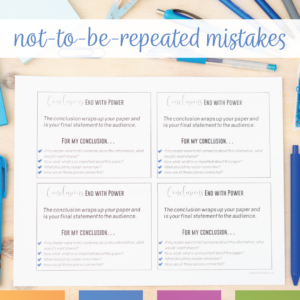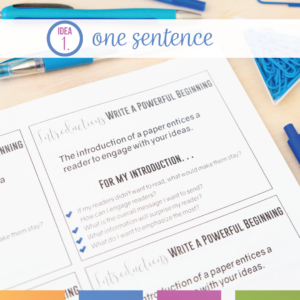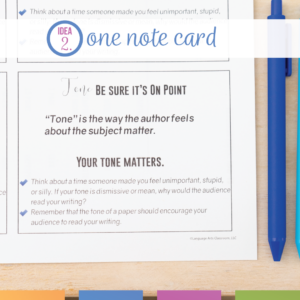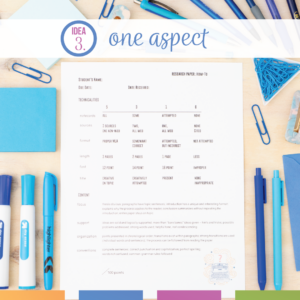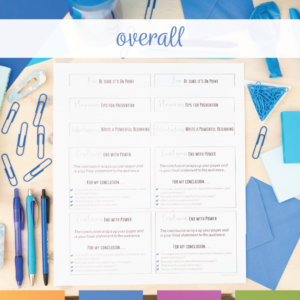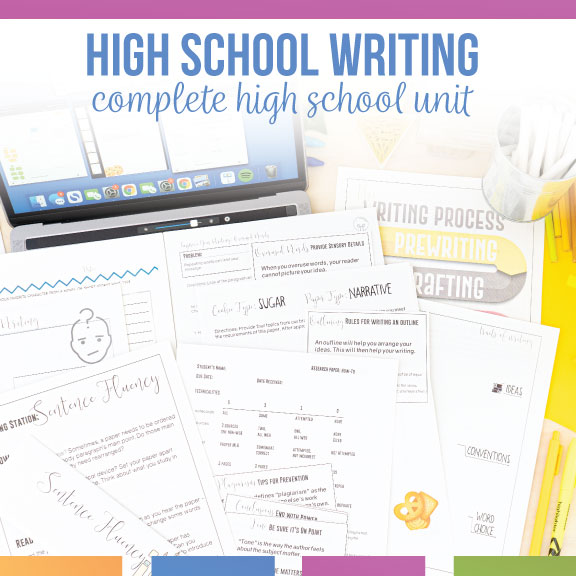Stuck on providing writing feedback to students? I have three quick ways to provide meaningful writing feedback to older students.
When I consider what I want for my secondary writers, this list is huge. Their abilities to succeed with language and communication are paramount, and I want what is best for my students. As their guide, my feedback should be helpful and succinct.
I want my students to leave my classroom ready to write for their next stage in life. Plus, I want students to have a method that works for them. I want students to coherently and ethically explain their stances in writing.
We all have writing rubrics. Along with those rubrics (reflective of standards), I provide targeted cards and discussions with classes. Here are ideas for adapting my methods into your own.
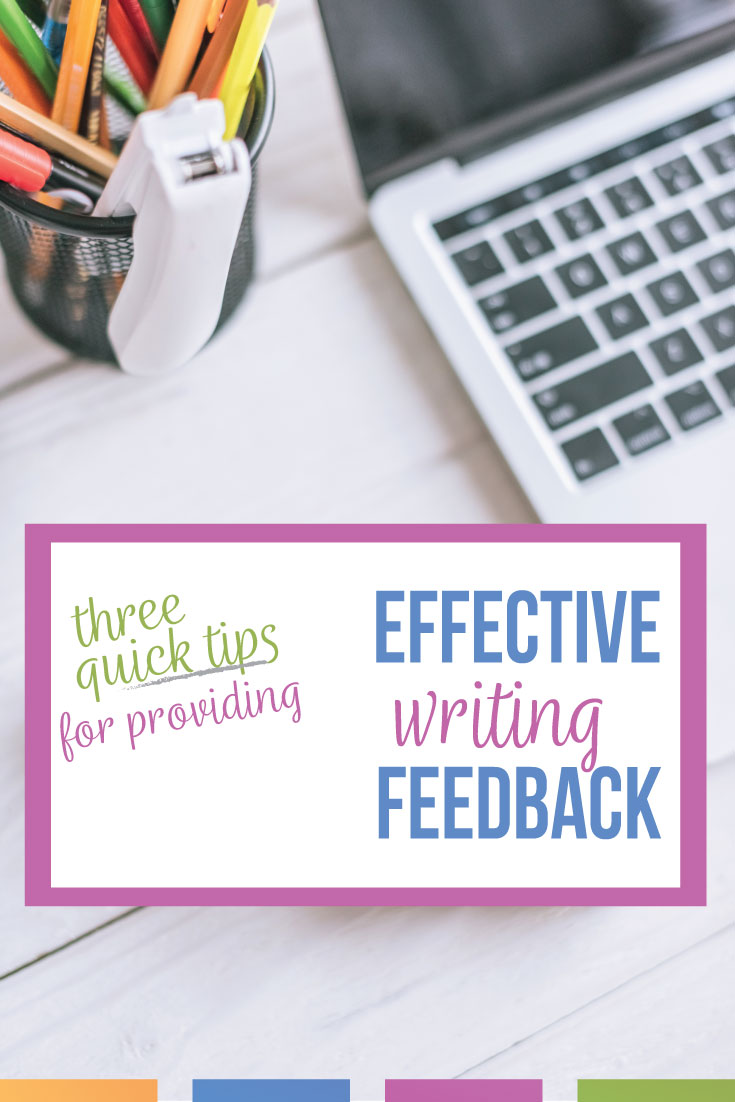
How can writing feedback help students improve their writing skills?
Writing feedback helps students improve their writing skills by providing specific and constructive comments on their work. It helps students identify areas of improvement, learn from their mistakes, and make necessary revisions to enhance the quality of their writing.
Mistakes in providing writing feedback to students.
Honestly, the seriousness of teaching writing makes me nervous. The intensity of helping so many people at once stresses me, and providing meaningful feedback is key.
Believing that, I think years ago, I overwhelmed students with feedback. My thought: if I showed every error, that if I graded just a bit more, students would become stronger writers. Once I cut back and made the process manageable (for both parties!), young writers better implemented the feedback.
Providing writing feedback to students can be a lengthy process for secondary English teachers, but it is a crucial one. How can we give so much feedback effectively?
Over the years, I’ve managed to find three quick ways for providing writing feedback to students. I hope these help you, and please, make them your own.
One sentence.
My first feedback trick: look at one powerful sentence.
In “Provide Feedback on Writing,” Sarah Woodard suggests putting “the student in the driver’s seat.” I do a similar activity where I ask students about what sentence they are most proud. Not only does this practice lower apprehension about writing, but it also spurs classroom discussion.
The process.
Start a classroom discussion that involves what makes strong sentences. The class might highlight:
- Sensory language.
- Imagery.
- A strong flow, great transitions.
- Interesting.
Then, ask everyone to look over their work. As they read, they should highlight their most impressive sentence. My favorite tool for gathering these sentences is a basic Google Slides presentation that I share with the class. Everyone can add a sentence to one slide. Look over the presentation before starting, but then brag about the strong sentences the class wrote.
The benefits.
As students share an impressive sentence, other students are learning. Students will find ways to improve their writing, will hear transitions and strong vocabulary, and see the effects of a variety of sentence types. Since their peers are writing well, students get the boost of confidence they need for writing. The “one sentence” idea provides mentor sentences from students.
After you have a strong classroom community and can gauge involvement, some sentences can become mentor sentences. Put them on the board and analyze them as a class.
One note card.
My second feedback trick: use one note card to narrow down areas for improvement. This trick is my method for differentiated feedback.
My one note card trick is a staple in my classroom. As students write (or edit and revise), I walk around with a pack of note cards or conferencing cards.
The process.
As class begins, everyone begins working. I walk and pause with each student, reading and conferencing. I give students one note card each with advice, very limited advice. As we chat, each student receives specific feedback. You can do this any time during the writing process:
- For brainstorming, sit with the student and ask them to tell you their thoughts about the subject. Write a few ideas of what they say. Read back to students what you wrote, and ask them to categorize the information with you.
- For organizing, ask the student to show you their main ideas. Write them down and discuss with them similarities and differences. Sometimes, once students explain the ideas to another person (verbalize the ideas), they will see that some are too similar and should be combined. They might see an opportunity for adding another one.
- I often use the one note card idea to show students where to focus on editing. Students should take the responsibility of fixing their errors, but you can lead them for where to look. Limit the advice to three or four pieces: confused words, comma splices, capitalization… whatever. Tell students to check off the list on the card. (This portion normally deals with grammar.)
The note card is small and does not overwhelm students. It can be filled out in a manageable time period, and it is private between the student and the teacher. The one note card trick makes feedback manageable for all, and I love seeing students putting the note card on their desk to help them focus.
Student feedback.
The best part about using my one note card trick is that I can easily differentiate and scaffold where appropriate. For instance if students simply don’t understand a concept, I provide targeted practice. The notecards allow me to look at what will help individual students.
Then, student work gets feedback from peers. Ask everyone to write (perhaps on a note card) where a peer should focus. Students then exchange their writing and get feedback on one area. This method allows for peer editors not to be overwhelmed either.
One aspect.
My third feedback trick: direct feedback on one aspect for improvement. This method is my approach for whole-class feedback.
Again, this activity puts students in charge because as a class, we look at one aspect of a paper at a time. Overwhelmed students appreciate this approach because together, we are looking at one (manageable) aspect.
Specific examples.
After students have drafts, I will focus for a class period (maybe half a class period if appropriate) on certain elements. Specific examples:
- Counterclaims.
- Variety of sentences.
- Transitions, sentence structure.
- Conclusions.
- Leads.
- Integrating sources.
Anything! Mostly, I want to model for students that they can break down their papers into manageable pieces to better them—one aspect at a time. Then, my young writers are open to sharing common issues with me. We might branch out from the “one aspect” if classes are comfortable.
Teacher guidelines.
Together with a whole class, don’t simply provide direct instruction and move on. Accompany the constructive feedback with writing samples or book excerpts.
Secondly, during this “one aspect” portion, I model and practice with students. A great way to work on a piece of writing is with a writing conference. Spend 5-7 minutes per student over the course of several days looking at student papers. Ask each student where they would like to improve so that they take ownership of their own writing. Then, provide holistic feedback on that area.
Finally, what I don’t do anymore is provide feedback on a complete draft with complete markups. I don’t return papers that are covered in red. Students did not pay attention to the marks and if they did, they essentially made the corrections. I was not putting them in charge of learning. By focusing and really drilling down on individual strengths and weaknesses, students were less overwhelmed and more likely to own their writing.
Overall effective feedback ideas.
Once I realized that teaching writing overwhelmed me and that probably meant that I was overwhelming my students, I truly believe that my demeanor during writing lessons changed. These three methods allow for differentiation in manageable ways. Since young writers feel supported, they open up and implement feedback.
Proving writing feedback to students does not need to only take place from the final draft. Addressing areas during the writing process cuts down on errors and gives young writers the job of improving their papers.
My belief became that I could make providing writing feedback to students manageable. As a high school English teacher, grading writing still takes hours of my time. Working within the concept of “one” has greatly improved everyone’s time.


